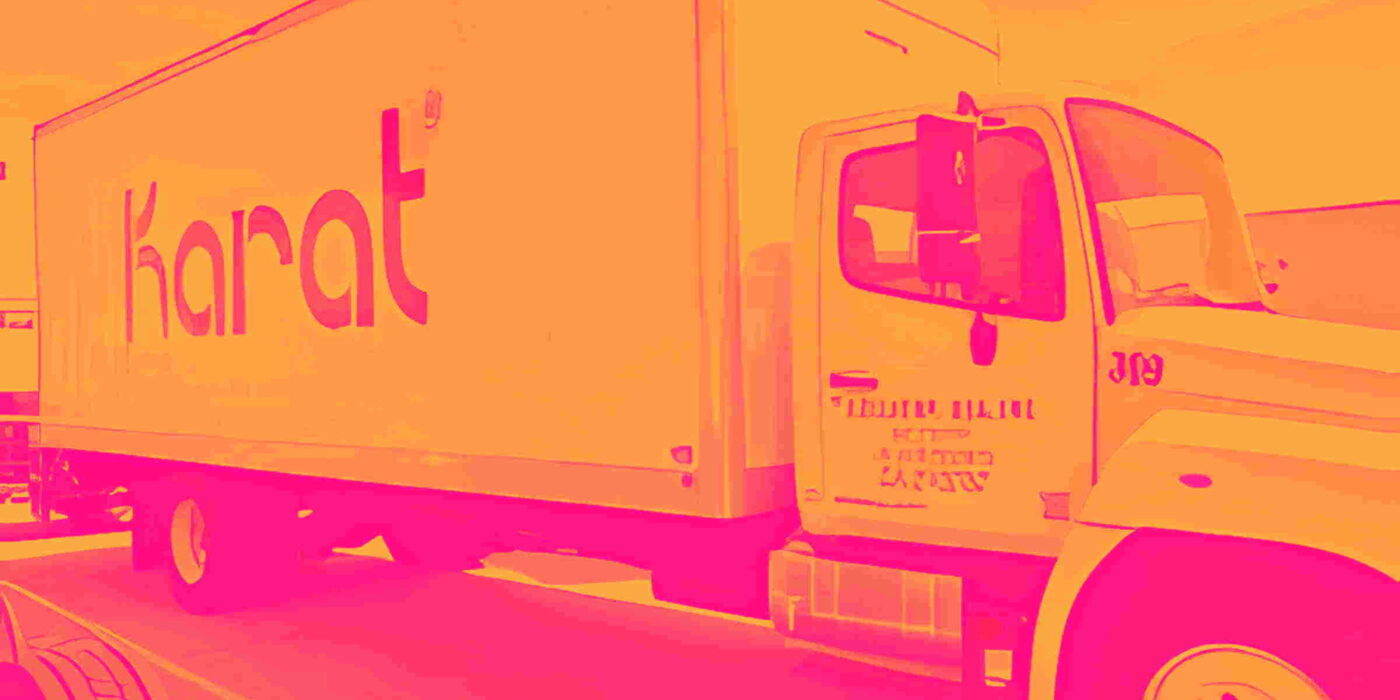
Foodservice packaging supplier Karat Packaging (NASDAQ: KRT) met Wall Street’s revenue expectations in Q2 CY2025, with sales up 10.1% year on year to $124 million. On the other hand, next quarter’s revenue guidance of $121.2 million was less impressive, coming in 2.6% below analysts’ estimates. Its non-GAAP profit of $0.57 per share was 5% below analysts’ consensus estimates.
Is now the time to buy Karat Packaging? Find out by accessing our full research report, it’s free.
Karat Packaging (KRT) Q2 CY2025 Highlights:
- Revenue: $124 million vs analyst estimates of $123.5 million (10.1% year-on-year growth, in line)
- Adjusted EPS: $0.57 vs analyst expectations of $0.60 (5% miss)
- Adjusted EBITDA: $17.69 million vs analyst estimates of $17.6 million (14.3% margin, 0.5% beat)
- Revenue Guidance for Q3 CY2025 is $121.2 million at the midpoint, below analyst estimates of $124.5 million
- Operating Margin: 13.1%, up from 10.3% in the same quarter last year
- Free Cash Flow Margin: 8.5%, down from 10.8% in the same quarter last year
- Market Capitalization: $536.8 million
“Our record quarterly performance is a testimony to our nimble business model and resilient global supply chain, which allowed us to achieve early success in navigating the supply chain disruptions and trade uncertainty. We are swiftly diversifying our sourcing footprint, reducing sourcing from China to just 10 percent in the second quarter, while implementing plans to further expand across other Asian countries and Latin America to enhance supply chain resilience and flexibility,” said Alan Yu, Chief Executive Officer.
Company Overview
Founded as Lollicup, Karat Packaging (NASDAQ: KRT) distributes and manufactures environmentally-friendly disposable foodservice packaging solutions.
Revenue Growth
A company’s long-term sales performance is one signal of its overall quality. Any business can experience short-term success, but top-performing ones enjoy sustained growth for years. Luckily, Karat Packaging’s sales grew at an impressive 10.8% compounded annual growth rate over the last five years. Its growth beat the average industrials company and shows its offerings resonate with customers.
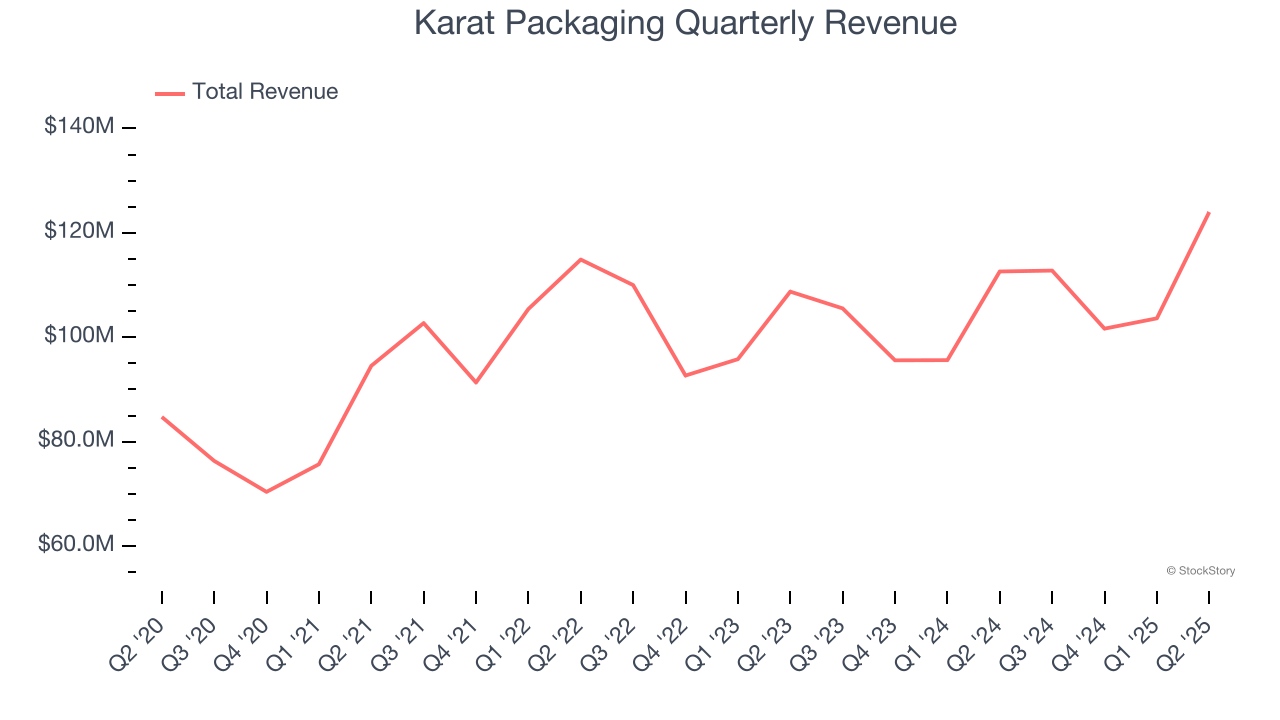
Long-term growth is the most important, but within industrials, a half-decade historical view may miss new industry trends or demand cycles. Karat Packaging’s recent performance shows its demand has slowed significantly as its annualized revenue growth of 4.2% over the last two years was well below its five-year trend. 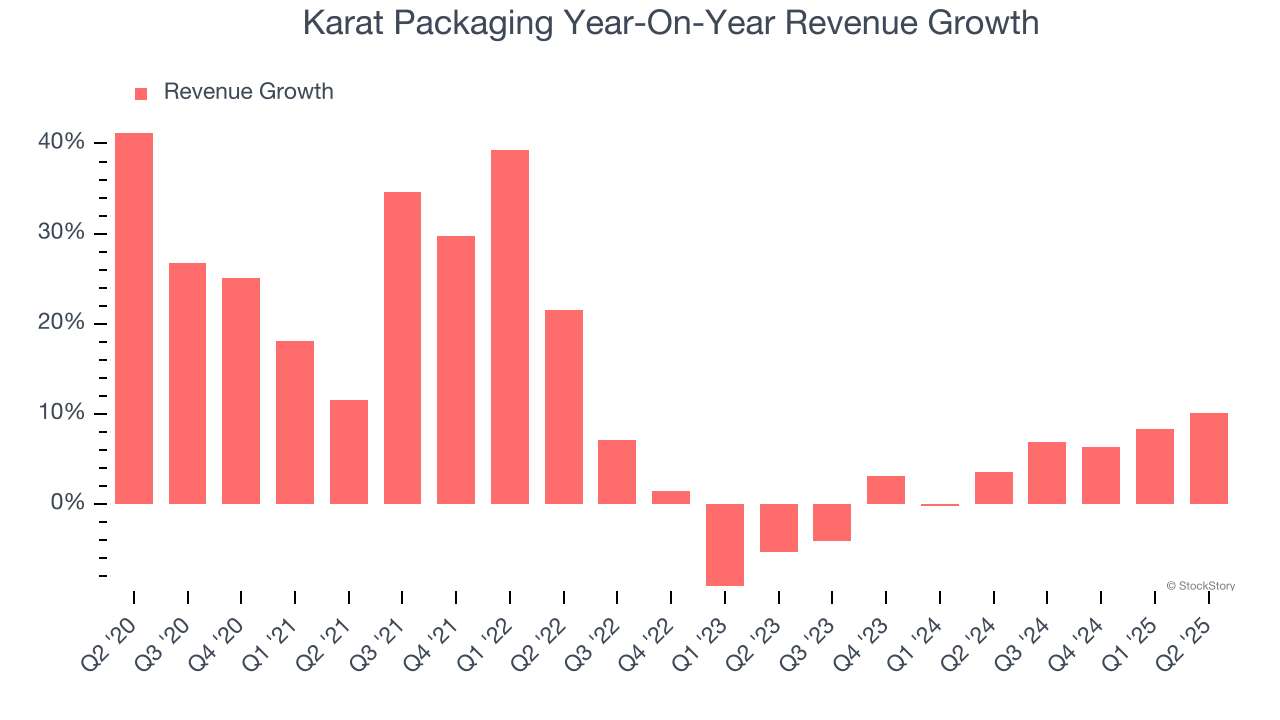
This quarter, Karat Packaging’s year-on-year revenue growth was 10.1%, and its $124 million of revenue was in line with Wall Street’s estimates. Company management is currently guiding for a 7.5% year-on-year increase in sales next quarter.
Looking further ahead, sell-side analysts expect revenue to grow 8.5% over the next 12 months, an improvement versus the last two years. This projection is above the sector average and suggests its newer products and services will fuel better top-line performance.
Unless you’ve been living under a rock, it should be obvious by now that generative AI is going to have a huge impact on how large corporations do business. While Nvidia and AMD are trading close to all-time highs, we prefer a lesser-known (but still profitable) stock benefiting from the rise of AI. Click here to access our free report one of our favorites growth stories.
Operating Margin
Operating margin is a key measure of profitability. Think of it as net income - the bottom line - excluding the impact of taxes and interest on debt, which are less connected to business fundamentals.
Karat Packaging has done a decent job managing its cost base over the last five years. The company has produced an average operating margin of 8.7%, higher than the broader industrials sector.
Analyzing the trend in its profitability, Karat Packaging’s operating margin rose by 3.5 percentage points over the last five years, as its sales growth gave it operating leverage.
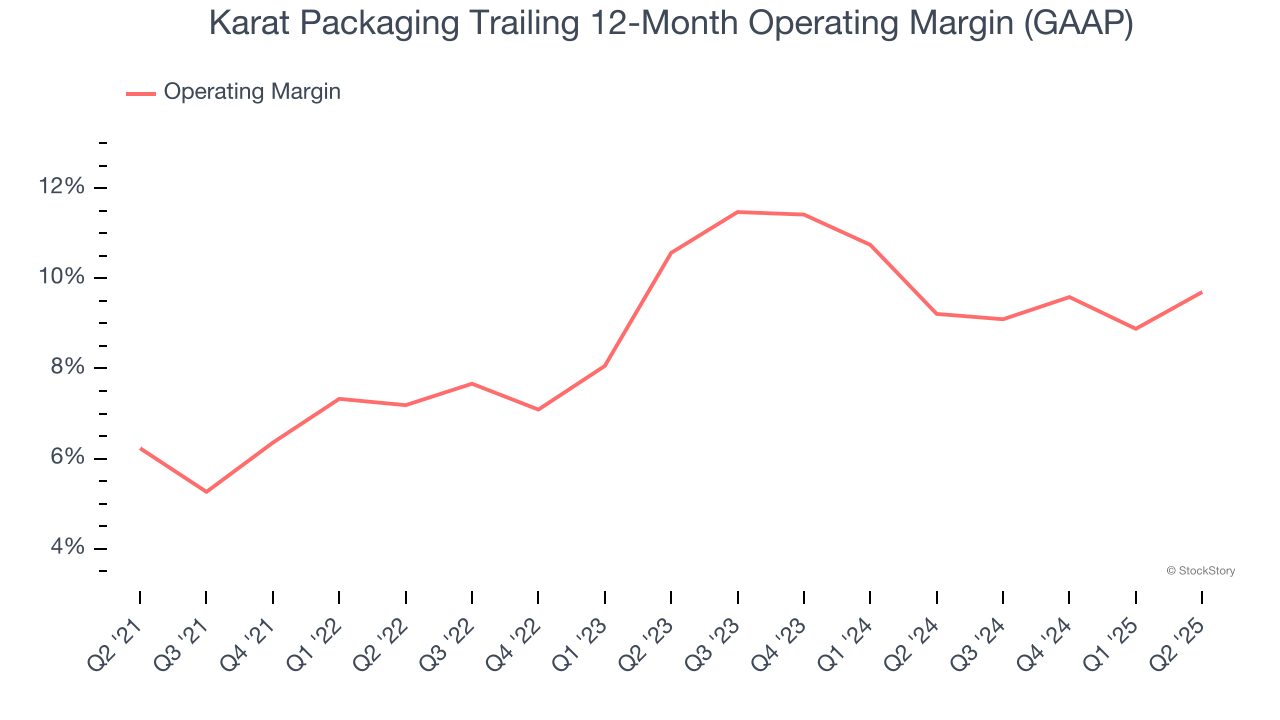
In Q2, Karat Packaging generated an operating margin profit margin of 13.1%, up 2.8 percentage points year on year. The increase was encouraging, and because its operating margin rose more than its gross margin, we can infer it was more efficient with expenses such as marketing, R&D, and administrative overhead.
Earnings Per Share
We track the long-term change in earnings per share (EPS) for the same reason as long-term revenue growth. Compared to revenue, however, EPS highlights whether a company’s growth is profitable.
Karat Packaging’s full-year EPS grew at an astounding 19.6% compounded annual growth rate over the last four years, better than the broader industrials sector.
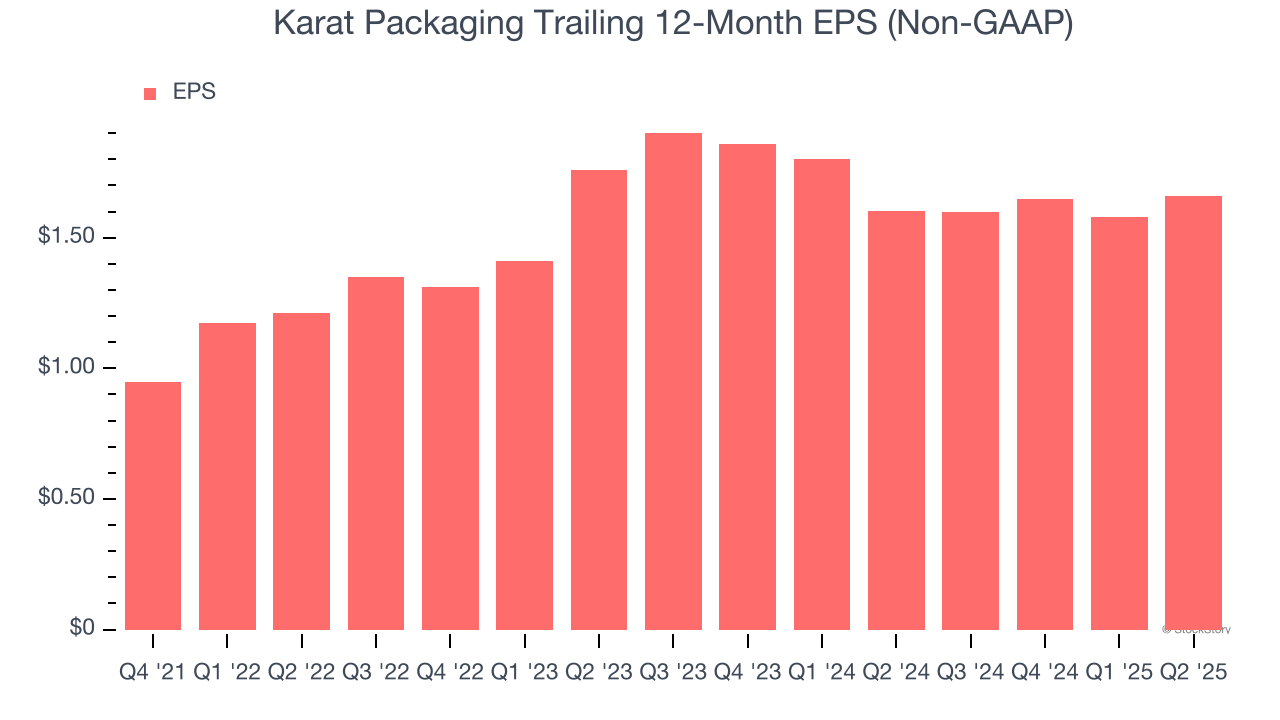
Like with revenue, we analyze EPS over a shorter period to see if we are missing a change in the business.
Sadly for Karat Packaging, its EPS declined by 2.9% annually over the last two years while its revenue grew by 4.2%. This tells us the company became less profitable on a per-share basis as it expanded.
We can take a deeper look into Karat Packaging’s earnings to better understand the drivers of its performance. We mentioned earlier that Karat Packaging’s operating margin expanded this quarter, but a two-year view shows its margin has declined by 3 percentage pointswhile its share count has grown 1.2%. This means the company not only became less efficient with its operating expenses but also diluted its shareholders. 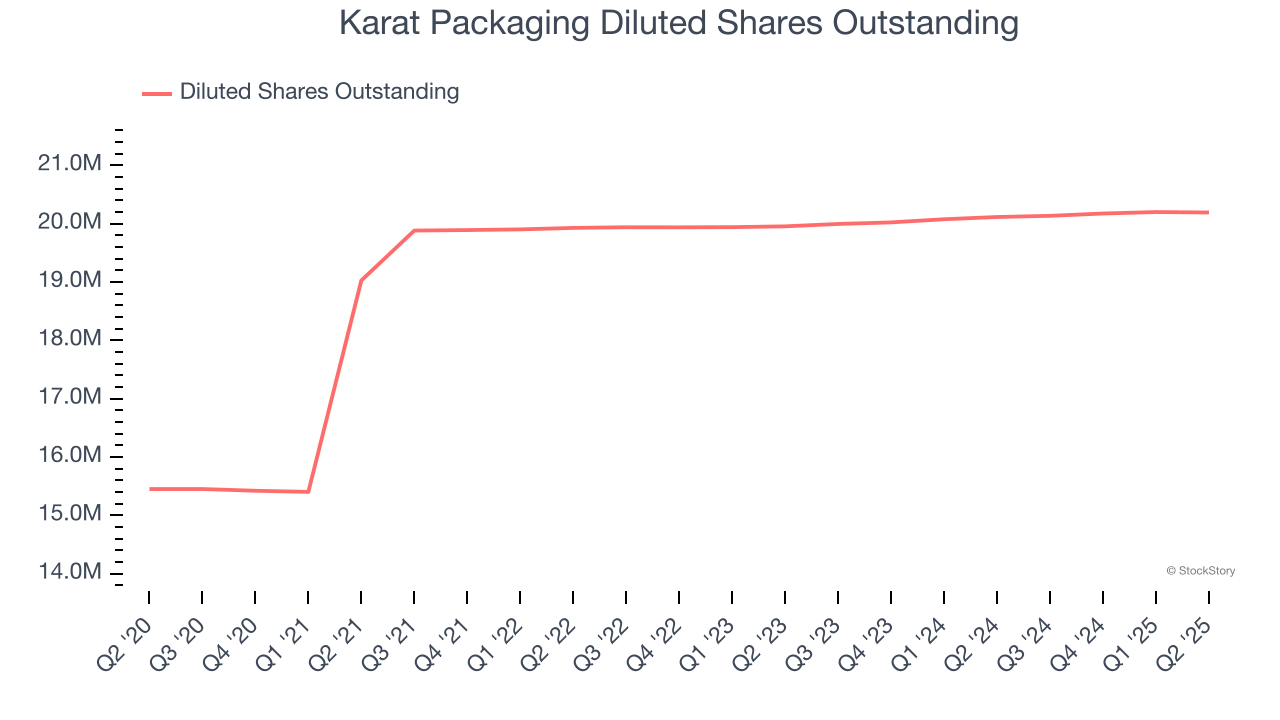
In Q2, Karat Packaging reported adjusted EPS at $0.57, up from $0.49 in the same quarter last year. Despite growing year on year, this print missed analysts’ estimates, but we care more about long-term adjusted EPS growth than short-term movements. Over the next 12 months, Wall Street expects Karat Packaging’s full-year EPS of $1.66 to shrink by 10.8%.
Key Takeaways from Karat Packaging’s Q2 Results
It was good to see Karat Packaging meet analysts’ revenue expectations this quarter. On the other hand, its EPS missed and its revenue guidance for next quarter fell short of Wall Street’s estimates. Overall, this was a softer quarter. The stock remained flat at $26.50 immediately following the results.
Karat Packaging may have had a tough quarter, but does that actually create an opportunity to invest right now? When making that decision, it’s important to consider its valuation, business qualities, as well as what has happened in the latest quarter. We cover that in our actionable full research report which you can read here, it’s free.





